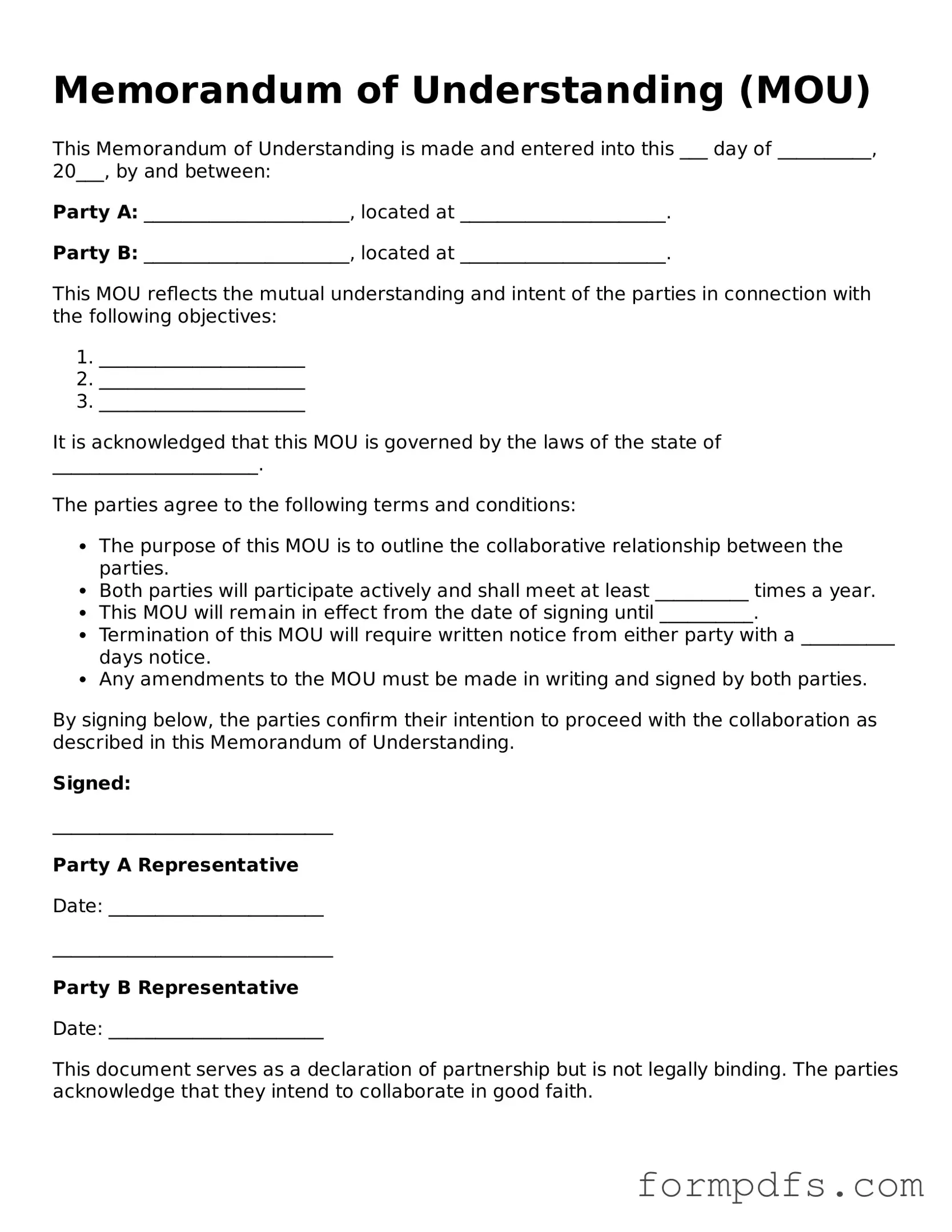What is a Memorandum of Understanding (MOU)?
A Memorandum of Understanding (MOU) is a document that outlines an agreement between two or more parties. It serves as a formal way to express the intentions and expectations of each party. While it is not legally binding like a contract, an MOU can help clarify roles and responsibilities, making it easier to work together towards a common goal.
When should I use an MOU?
An MOU is useful when you want to outline a partnership, collaboration, or project without the need for a formal contract. It is often used in situations where parties want to establish mutual understanding before entering into a more detailed agreement. Examples include collaborations between organizations, joint ventures, or community projects.
What should be included in an MOU?
Typically, an MOU should include the names of the parties involved, the purpose of the agreement, the roles and responsibilities of each party, the duration of the agreement, and any specific terms or conditions. It may also outline how disputes will be resolved and how the MOU can be amended or terminated.
Is an MOU legally binding?
An MOU is generally not legally binding, meaning that it does not create enforceable obligations like a contract does. However, it can still hold significant weight in negotiations and may be considered a commitment by the parties involved. It’s important to clearly state whether the MOU is intended to be binding or non-binding.
How do I create an MOU?
To create an MOU, start by clearly defining the purpose and objectives of the agreement. Next, outline the roles and responsibilities of each party. Use clear language and be specific about the terms. Once drafted, all parties should review the document to ensure it reflects their understanding. Finally, have all parties sign the MOU to indicate their agreement.
Can an MOU be modified after it is signed?
Yes, an MOU can be modified after it is signed. To do this, the parties involved should agree on the changes and document them in writing. It is advisable to include a section in the original MOU that outlines how amendments can be made. This ensures that all parties are aware of the process for making changes.
